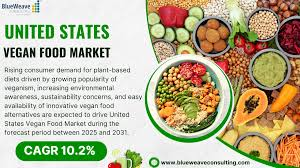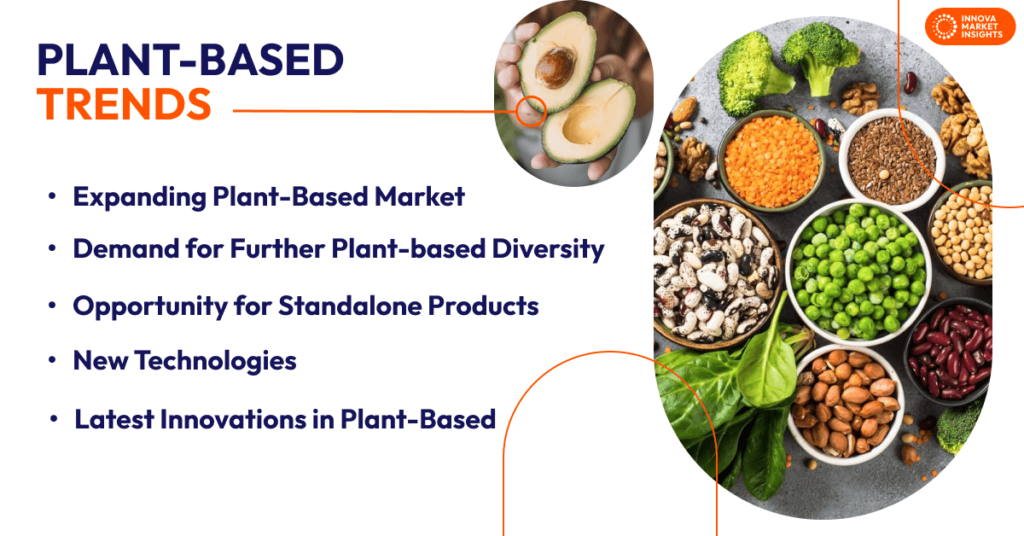The U.S. food industry is undergoing a major transformation, and it’s all about plants. From grocery store shelves to fast-food menus, plant-based foods are no longer just a niche trend for vegans or health enthusiasts. They’re becoming a mainstream choice for millions of Americans. This shift is driven by changing consumer habits, environmental concerns, and innovations in food technology. So, what’s behind this plant-based revolution, and how is the U.S. food industry adapting to meet the demand? Let’s dive in.

The Rise of Plant-Based Eating
Over the past decade, plant-based diets have skyrocketed in popularity. A 2023 survey by the Plant Based Foods Association found that 70% of Americans now eat plant-based foods at least occasionally, up from just 50% five years ago. People aren’t just going vegan—many are simply cutting back on meat and dairy, opting for “flexitarian” lifestyles that prioritize plant-based meals without fully giving up animal products.
This change is fueled by a mix of motivations. Health is a big driver. Studies link plant-based diets to lower risks of heart disease, diabetes, and obesity, which resonates with Americans looking to improve their well-being. Environmental concerns are another factor. Livestock farming contributes significantly to greenhouse gas emissions, and more consumers want to reduce their carbon footprint. Plus, younger generations like Millennials and Gen Z are drawn to the ethical side, wanting to support animal welfare and sustainable practices.

Big Brands Jump on Board
The food industry has taken notice, and major players are racing to capture this growing market. Companies like Beyond Meat and Impossible Foods have led the charge with plant-based burgers that mimic the taste and texture of beef. These products are now staples at chains like Burger King, which offers the Impossible Whopper, and McDonald’s, which has tested plant-based options in select markets. Even traditional meat giants like Tyson Foods and Perdue are investing in plant-based lines, proving that the trend isn’t just for startups.
Supermarkets are also stocking up. Walk into any major grocery store, and you’ll find shelves packed with plant-based milk, cheese, yogurt, and even seafood alternatives. Oat milk, for example, has exploded in popularity, with brands like Oatly reporting double-digit sales growth year after year. In 2024, plant-based milk accounted for 16% of all milk sales in the U.S., a number that keeps climbing.
Innovation Drives the Trend
What’s making plant-based foods so appealing? Innovation is key. Food scientists are creating products that don’t just taste good but feel familiar to meat and dairy lovers. Take plant-based meats: they’re made from ingredients like pea protein, soy, or mushrooms, blended with fats and seasonings to replicate the juiciness of a burger or the chew of chicken. Meanwhile, plant-based cheeses are getting creamier thanks to advances in nut-based and fermentation techniques.
Technology is also making these foods more accessible. New production methods have lowered costs, bringing prices closer to traditional products. For example, a plant-based burger patty that cost $10 a pound a few years ago now averages around $6, making it a realistic option for budget-conscious shoppers. Restaurants are jumping in too, with chains like Chipotle and Taco Bell offering customizable plant-based bowls and tacos that don’t skimp on flavor.

Challenges in the Plant-Based Boom
It’s not all smooth sailing, though. The plant-based industry faces hurdles that could slow its growth. For one, some consumers still hesitate because of taste or texture concerns. While products have improved, not every plant-based option nails the experience of meat or dairy, and picky eaters can be hard to win over. Price is another issue—despite progress, plant-based foods are often pricier than their conventional counterparts, which can deter lower-income households.
There’s also the question of health. While plant-based diets are generally seen as nutritious, not all plant-based products are created equal. Some meat alternatives are highly processed and packed with sodium or additives, leading to debates about whether they’re truly “healthy.” The industry is responding by focusing on cleaner labels and whole-food-based options, but it’s a work in progress.
Restaurants and Retail Adapt
The food industry isn’t just selling plant-based products—it’s rethinking how to market and serve them. Restaurants are getting creative, moving away from labeling dishes as “vegan” to appeal to a broader crowd. Instead of a “vegan burger,” you might see a “smoky plant-based stack” on the menu, designed to sound indulgent rather than restrictive. Chains like Sweetgreen and CAVA are thriving by offering plant-heavy bowls that feel fresh and customizable, appealing to health-conscious diners.
Retailers are also stepping up. Major chains like Walmart and Kroger have dedicated plant-based sections, making it easier for shoppers to find these products. Some stores even offer in-store tastings or cooking demos to show customers how to use plant-based ingredients. Meanwhile, meal kit services like HelloFresh and Blue Apron now include plant-based recipes, helping home cooks experiment without committing to a full lifestyle change.
The Environmental Impact
One of the biggest selling points for plant-based foods is their environmental benefit. Producing plant-based proteins uses less water, land, and energy than raising livestock. For example, a 2024 study from the University of Oxford found that plant-based burgers generate 90% fewer greenhouse gas emissions than beef burgers. As climate change becomes a bigger concern, this is a powerful motivator for both consumers and companies.
Food giants are leaning into this narrative, with many pledging to reduce their environmental impact. Nestlé, for instance, has committed to making half its portfolio plant-based by 2030. Smaller brands are also emphasizing sustainability, using eco-friendly packaging and sourcing ingredients from regenerative farms. These efforts resonate with consumers who want their purchases to align with their values.
What’s Next for Plant-Based Foods?
The plant-based trend shows no signs of slowing down. Analysts predict the U.S. plant-based food market will hit $10 billion by 2027, up from $7 billion in 2023. As more Americans embrace flexitarian eating, the industry is likely to keep innovating, with new products like plant-based eggs, fish, and even ice cream hitting the market.
But the real game-changer could be accessibility. If prices continue to drop and products become available in more places—like convenience stores or school cafeterias—plant-based foods could become a true staple. Education will also play a role. As consumers learn how to cook with these ingredients and see them as versatile rather than “alternative,” adoption will grow.
A New Era for Food
The U.S. food industry’s embrace of plant-based trends is more than a fad—it’s a fundamental shift in how we eat. From fast-food chains to family kitchens, plant-based foods are reshaping menus and mindsets. While challenges remain, the combination of consumer demand, technological advances, and environmental urgency is driving this change forward.
For now, one thing is clear: plant-based eating isn’t just for vegans anymore. It’s for anyone who wants a tasty, sustainable, and healthier way to enjoy food. As the industry keeps evolving, Americans are proving they’re ready to dig into a greener future—one bite at a time.
Read more :- Top 10 Best American Superfoods That Boost Immunity Naturally





